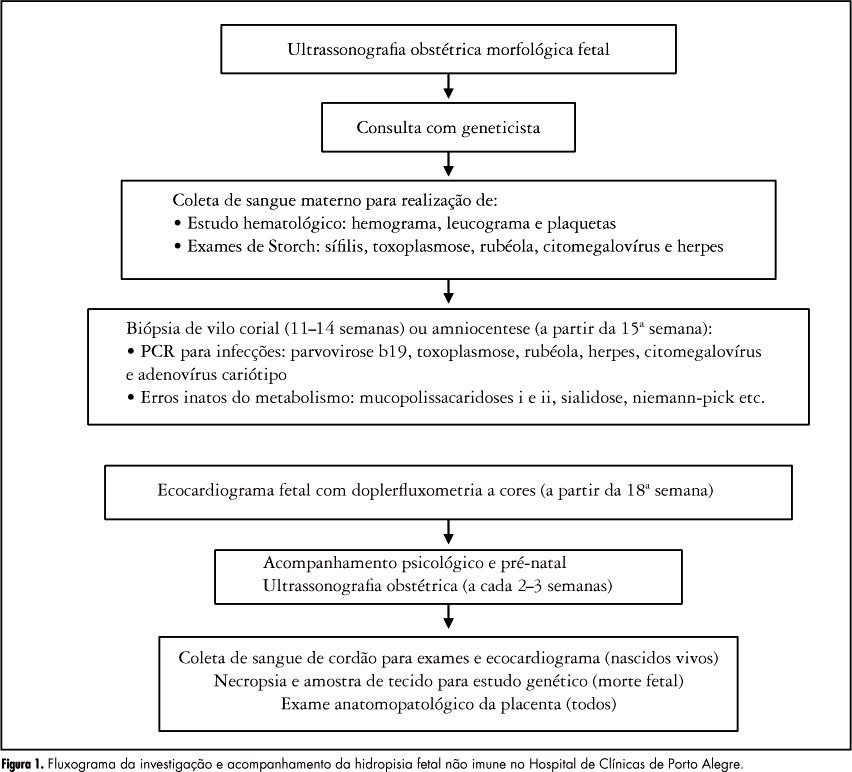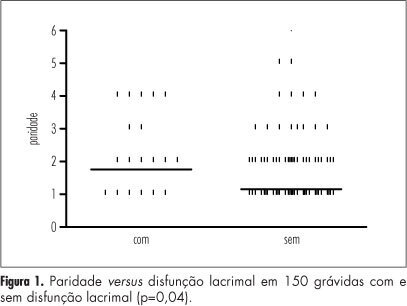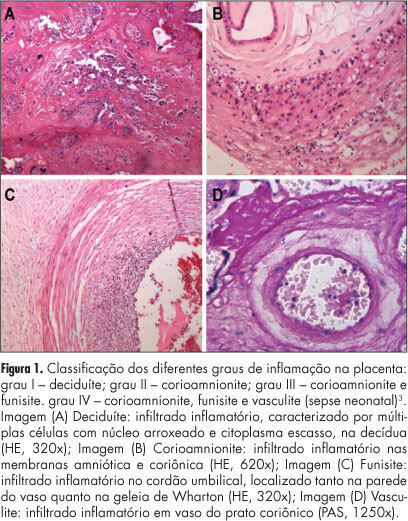Summary
Revista Brasileira de Ginecologia e Obstetrícia. 2013;35(8):368-372
DOI 10.1590/S0100-72032013000800006
PURPOSE: To compare the degree of peripheral facial palsy of pregnant women and puerperae at admission and at discharge and to evaluate related factors. METHODS: Retrospective, cross-sectional study, with analysis of medical records of pregnant and postpartum women with facial palsy, over a period of 12 months, with application of a standardized protocol for patient evaluation and of the House-Brackmann scale on the occasion of the first visit and at discharge. RESULTS: Six patients were identified, mean age of 22.6 years. Five cases were classified as stage IV and one as stage II on the House-Brackmann scale, being two of them puerperae and four pregnant. All showed improvement on the House-Brackmann scale. CONCLUSION: The Bell's palsy has a good prognosis even in pregnant and postpartum women, being important to perform the correct treatment to reduce the sequelae in this group identified as more susceptible to peripheral facial palsy.

Summary
Revista Brasileira de Ginecologia e Obstetrícia. 2013;35(3):130-135
DOI 10.1590/S0100-72032013000300007
PURPOSE: It was to determine the prevalence of depressive symptoms in a sample of puerperal women from Brasília, Brazil, distinguishing cases with onset after delivery from those already present during pregnancy. METHODS: A prospective cohort study with convenience sampling of patients submitted to elective cesarean section at two private hospitals. As an instrument for assessing depressive symptoms, the Edinburgh Postnatal Depression Scale with cutoff >13 was applied shortly before delivery and four to eight weeks after childbirth. RESULTS: Among the 107 women who completed the study, 11 (10.3%) had significant depressive symptoms during pregnancy and 12 (11.2%) during the postpartum period. Among the 12 patients with postpartum symptoms, 6 had symptoms during pregnancy, so that 5.6% of the sample had postpartum onset of depression. The higher overall frequency of depression was significantly among single women than among married women (p=0.04), a fact mainly due to a higher frequency of single women experiencing persistent depressive symptoms both before and after delivery (p=0.002). The risk of depression was not influenced by age, parity or educational level. CONCLUSION: Women with depression identified during the postpartum period comprise a heterogeneous group, in which symptoms may have started before pregnancy, during pregnancy or after childbirth. In this sample, half of the postpartum depression cases already presented symptoms during late pregnancy. Since depression can arise before and after childbirth, it may have different etiologies and, therefore, a different response to treatment, a possibility that should be considered by clinicians and researchers.
Summary
Revista Brasileira de Ginecologia e Obstetrícia. 2012;34(10):459-465
DOI 10.1590/S0100-72032012001000005
PURPOSES: To assess whether an enoxaparin-based intervention using a score system was effective in improving perinatal outcome in women with thrombophilia. METHODS: Study Design: Prospective, not randomized, uncontrolled, performed at a Clinic of High-Risk Pregnancy from November 2009 to November 2011. We included women with a diagnosis and therapeutic intervention for thrombophilia acquired and/or inherited in the current pregnancy. The obstetric and perinatal outcomes of pregnant women before the intervention were compared with outcomes after the intervention, and statistically analyzed using the χ2 test with Yates correction, considered significant when p<0.05. The initial dose of low-molecular-weight Heparin (LMWH) was guided by a scoring system based on the clinical and gestational history of the patients and screening tests for acquired and/or inherited thrombophilia. RESULTS: We included 84 pregnant women with 175 pregnancies before diagnosis, 20.0% of which resulted in fetal ou perinatal death, 40.0% resulted in abortion, 17.7% developed preeclampsia/eclampsia, 10.3% resulted in full-term births, and 29.7% in premature births. In the 84 pregnancies after intervention, 6.0% resulted in fetal ou perinatal death, 1.2% in abortion, 4.8% developed preeclampsia/eclampsia, 22.6% resulted in premature birth, and 70.2% in full-term birth. A significant reduction in the rate of stillbirths/perinatal death (p<0.05) and abortion (p<0.0001) and a significant increase (p<0.05) in the number of live births were observed after intervention. CONCLUSION: Enoxaparin-based intervention using a score system in pregnant women with thrombophilia is effective in improving perinatal outcome.
Summary
Revista Brasileira de Ginecologia e Obstetrícia. 2012;34(11):494-498
DOI 10.1590/S0100-72032012001100003
PURPOSE: To describe trends in prevalence, indicators of care and pregnancy outcomes for women with pre-existing type I or type II diabetes. METHODS: Cohort study of all consecutive singleton pregnancies complicated by pre-existing type I or type II diabetes followed from 2004 to 2011 at a tertiary perinatal care centre (n=194). We collected data from the medical records and described trends in demographics, clinical history, indicators of care before or during pregnancy and glycaemic control. We also studied perinatal outcomes, including gestational age at delivery, mode of delivery, and birthweight. RESULTS: The overall incidence of pregestational diabetes was 4.4 per 1000, with no significant changes throughout the study period. The number of type 2 diabetes cases also remained constant. In 67% of cases delivery occurred after 37 weeks (maximum 80% in 2010 - 11). During this period there was a significant reduction in rates of elective caesarean section (p=0.03) and in the incidence of large infants for gestational age (p=0.04). Indicators of glycaemic control were favorable throughout pregnancy, with no significant trends detected during the study period. However, preconceptional care indicators were substandard, with no significant improvement. CONCLUSIONS: A multidisciplinary approach to diabetic management and obstetric practice contributed to adequate glycaemic control throughout pregnancy and to improved pregnancy outcomes. Preconceptional care remains a key challenge.
Summary
Revista Brasileira de Ginecologia e Obstetrícia. 2012;34(7):310-315
DOI 10.1590/S0100-72032012000700004
PURPOSE: To identify the etiology of nonimmune hydrops fetalis cases in pregnant women diagnosed and referred for prenatal care. METHODS: Retrospective analysis of cases with nonimmune hydrops fetalis that were monitored between March 1992 and December 2011. Diagnosis was confirmed by the presence of fetal subcutaneous edema (≥5 mm) with effusion in at least one serous cavity using obstetric ultrasound, and etiological investigation was conducted with cytogenetic (karyotype), infectious (syphilis, parvovirus B19, toxoplasmosis, rubella, cytomegalovirus, adenovirus and herpes simplex), hematologic and metabolic (inborn errors) analysis and fetal echocardiography. Twin pregnancies were excluded. Statistical analysis was performed using the χ² test for adhesion (software R 2.11.1). RESULTS: We included 116 patients with nonimmune hydrops fetalis; the etiology was elucidated in 91 cases (78.5%), while 25 cases (21.5%) were classified as idiopathic. Most cases had a chromosomal etiology, for a total of 26 cases (22.4%), followed by lymphatic etiology with 15 cases (12.9% with 11 cases of cystic hygroma), and cardiovascular and infectious etiology with 14 cases each (12.1%). In the remaining cases, the etiology was thoracic in 6.9% (eight cases), malformation syndromes in 4.3% (five cases), extrathoracic tumors in 3.4% (four cases), metabolic in 1.7% (two cases), and hematologic, gastrointestinal and genitourinary in 0.9% (one case each). During the postnatal period, 104 cases were followed up until the 40th day of life, and 12 cases had intrauterine fetal death. The survival rate of these 104 newborns was 23.1% (24 survived). CONCLUSION: An attempt should be made to clarify the etiology of hydrops diagnosed during pregnancy since the condition is associated with a wide spectrum of diseases. It is especially important to determine whether a potentially treatable condition is present and to identify disease at risk for recurrence in future pregnancies for adequate pre-conception counseling.

Summary
Revista Brasileira de Ginecologia e Obstetrícia. 2012;34(4):170-174
DOI 10.1590/S0100-72032012000400006
PURPOSE: To assess the prevalence of lacrimal dysfunction during pregnancy comparing it to non-pregnant women and to correlate these findings with obstetric history. METHODS: We interviewed 150 pregnant and 150 non-pregnant women for symptoms of dry eyes and obstetric history. Both groups underwent Schirmer I testing and responded to a questionnaire on dry eye symptoms. Patients with collagen diseases, medications associated with dryness of mucous membranes, hepatitis C infection and AIDS, previous intraocular inflammation and eye surgery were excluded. Data were analyzed by the Χ2 and Fisher tests when the data were nominal and by the Student´s t-test and Mann-Whitney test when numerical. The level of significance was set at 5%. RESULTS: The two groups did not differ in symptoms of lacrimal dysfunction. The results of Schirmer's test were equal in both groups for the right eye (p=0.3) and left eye (p=0.3). However, pregnant women had a higher prevalence of at least one dry eye (p=0.004). The occurrence of dry eye in both groups (patients and controls) was associated with a greater number of full-term pregnancies/patient (p=0.04) but not with pregnancy time (p=0.5) or number of abortions (p=0.9). CONCLUSIONS: Pregnant women suffer more from lacrimal dysfunction than non pregnant women; in both groups the prevalence of tear dysfunction is more elevated in women with higher parity.

Summary
Revista Brasileira de Ginecologia e Obstetrícia. 2012;34(4):153-157
DOI 10.1590/S0100-72032012000400003
PURPOSE: To evaluate the influence of maternal complications, prematurity, fetal anthropometric parameters and conditions of the newborn on different degrees of chorioamnionitis. METHODS: We analyzed 90 placentas from deliveries performed at the General Hospital of Triângulo Mineiro Federal University with a diagnosis of inflammation in the anatomopathological exams. We reviewed the medical records to obtain relevant maternal and fetal information. The infections were classified as grade I - deciduitis; grade II - chorioamnionitis; grade III - chorioamnionitis and vasculitis; grade IV - neonatal sepsis and grade V - fetal death and pneumonitis. RESULTS: Among the pregnant women analyzed, 50.0% had no complications, 15.0% had ruptured membranes, 15.0% urinary tract infection, 7.5% hypertensive disorders, 7.5% transvaginal infection, 5.0% hematogenous infection, and 11.1% other complications. More than a half the neonates were males and 72.2% were born at term. Analysis of the degree of chorioamnionitis showed that 56.7% had grade I, 22.2% grade II, 4.4% grade III, 10.0% grade IV, and 6.7% grade V. Data were analyzed statistically by the Χ2 test for qualitative variables and by the Spearman test for correlation analysis. The higher grades of chorioamnionitis were observed in cases of maternal complications. We observed negative correlations between all parameters and the degree of fetal chorioamnionitis, which were significant regarding weight, length, thoracic circumference and Apgar score in the first and fifth minutes. CONCLUSIONS: The different patterns of chorioamnionitis were related to different maternal and fetal clinical features, affecting the life conditions of the newborn and the severity of morphological lesions found in stillbirths.
